|
If you know anything about me yet, it is that I'm a lover of Pranayama or yogic breathing. As many posts as I have written about the benefits of Pranayama and how to actually perform various types of Pranayama, I don't think I have ever laid out the basics. The word Pranayama is a Sanskrit compound and it has been defined in numerous ways by different authors/commentators/etc.
I personally view Pranayama as the expansion of the breath and individual energy (life force) into the larger interconnected cosmic universe. When we work with our breath, we gain access to our life force energy. Pranayama is the access point to the subtler aspects of yoga as well as being tremendously helpful in developing body awareness, mindfulness, focus and stamina. Mainstream society is now discovering the benefits of pranayama, or yogic breathing exercises. The various types of Pranayama are accessible to the most beginner students, even those whose physical impairments and injuries prevent most asanas (yoga postures). Whether you are a beginner or advanced yogi, you will find Pranayama to be a powerful tool to help you on your yogic journey. How to Practice Pranayama 1. Clothing: Clothing should be loose, especially around the abdomen, to ensure the diaphragm is not impeded. 2. Diet: Do not eat heavy meals at least 2-3 hours prior to practicing Pranayama. 3. Time: Dawn is a terrific time to practice yoga and meditation as well as Pranayama because the early morning air is fresh and contains the most amount of Prana (life force). Of course, if this is not feasible, no worries, practice when you can. 4. Posture: Always sit with your back as straight if possible. In addition, keep the chin slightly tucked so that the back of the neck is aligned with the spine. This will help the flow of energy up and down the spine. 5. Illness: Do not practice any advanced Pranayama techniques while ill. Do the easier breathing exercises. It is also fine to stop entirely until you have recovered fully. 6. Effort: Do not strain. Progression should be gentle and systematic. This is even more applicable for any Pranayama that requires you to hold your breath for prolonged periods. If you feel uncomfortable while practicing a Pranayama, stop, take a break and restart again when you feel ready. 7. Cautions: Do not practice any heat generating Pranayama while sitting directly in the sun. This can aggravate the heat in the system (pitta). Similarly, choose Pranayama according to physical conditions and state of your health. 8. Location: Try to practice in a well-ventilated room with plenty of fresh air. How will you practice your Pranayama today? Do you have any helpful tips that make your Pranayama practice more consistent? "There is a vitality, a life force, an energy, a quickening that is translated through you into action, and because there is only one of you in all of time, this expression is unique. "-Martha Graham
0 Comments
There are several types of breathing that can be unhealthy. Yoga, as we all know, can help us break these habits. Yoga can retrain our brain and body to get us off the hamster wheel of the most common unhelpful breathing practices: hyperventilation, reverse breathing, collapsed breathing and frozen breathing. Hyperventilation is the act of breathing quickly no matter what we are doing. It’s not just when we are scared, frighted or upset like in the movies. It can be a breathing pattern we do continually every minute of every day. In hyperventilation, you will chest breath and only partially contract the diaphragm. Thus, reducing the space the lungs have to expand. This results in you having to increase the number of breaths per minute to get enough oxygen and, ultimately, increases the amount of carbon dioxide lost on the exhale making the body too alkaline. Hyperventilation makes the arteries in the brain constrict causing headaches and problems with concentration. Also due to the reduced oxygen levels, the blood’s hemoglobin does not release oxygen to the cells (causing dizziness, and breathlessness) and perpetuates the hyperventilation pattern. Additionally, hyperventilation causes constriction of the arteries reducing blood flow to the extremities, increases calcium levels causing muscle tension, and increases the excitability of the nervous system causing irritability, overreacting, and inappropriate responses. It has also been documented that hyperventilation causes nightmares, insomnia, visual disturbances, anxiety, and muscle cramps, just to name a few. Reverse breathing is when your abdomen moves ‘in” on the inhale and moves “out” on the exhale. Your pelvic floor movement is also reversed meaning the pelvic floor “closes” (rises) on the inhale and “opens” (lowers) on the exhale. The reversal can cause chronic tension in your upper body including the neck, shoulders and jaw areas. Reverse breathing also causes indigestion, heartburn, bloating, and flatulence due to the abdomen never fully relaxing at any stage of breathing. Collapsed breathing is chest breathing with your whole body moving downward. Your chest draws downward, your shoulders are hunched protectively, and your belly is projected forward and down. Typically, collapsed breathers have little tone in their lower body (muscles and organs) with the heart and lungs resting down on their belly. While breathing, your belly will remain static, and your chest and shoulders rise up and down slightly. Finally, frozen breathing is when the entire outer layer of your body contracts. This contraction suppresses the natural movement of your breath. Very little movement is seen on the surface of the body in frozen breathing. Your shoulders will typically draw toward each other, and you will hold your breath. What To Do... A yoga practice that can address all four breathing challenges is to lay on the floor in a supine position and start to notice where you breath. Donna Farhi’s “Where Do I Breathe?” practice is an excellent method to begin the learn exactly where in the body you are breathing and to become more aware or mindful of those breathing patterns. Here's how to start (for more in-depth exploration I recommend Farhi's The Breathing Book):
After you develop this awareness, you can try three-part breathing to access all the parts of your lungs. Three-part breathing can also start in a supine position so you can focus on the breathing aspects and not on having good posture.
Once you feel comfortable supine, you can try three-part breathing in a seated position with more focus on posture to prevent collapsing of the shoulders and chest. Additionally, you can incorporate a guided visualization to help cultivate mindful breathing, the slowing down of the breath, and a deepening of the inhales. Likewise, you may want to try a meditation practice on loving-kindness or ahimsa to address any unresolved mental or spiritual traumas that may be leading to poor breathing habits. Farhi, D. (1996). The Breathing Book: Good Health and Vitality Through Essential Breath Work. St. Martin's Griffin, New York. "A habit cannot be tossed out the window; it must be coaxed down the stairs a step at a time."-Mark Twain Relaxation is one of the single most important activities you can partake in to optimize pelvic floor health. Relaxation allows you to tap into interoception-that ability to sense and feel what is happening in your body. So, what is happening in your body when you breath? The anatomy and function of your pelvic diaphragm is directly linked to the anatomy and function of your respiratory diaphragm. When you inhale, as your lungs fill with air, your respiratory diaphragm descends and presses down onto your abdominal cavity which, in turn, presses onto your pelvic diaphragm. When you exhale, the two diaphragms return to their neutral upward position. Diaphragmatic breathing not only activates the parasympathetic nervous system and the relaxation response, but it creates this movement naturally. Diaphragmatic Breathing=A Healthy Pelvic Floor Let’s Try It! • Lying in on your back with your knees bent and feet on the floor, place one hand on your belly (just below your ribcage) and one hand on your chest. Begin to take long, slow, breaths which cause your belly to rise. However, your chest should remain still. • You can start with equal breaths-for example, a count of 4 on the inhale and a count of 4 on the exhale. When you are comfortable, you can begin to lengthen the inhales and exhales. • As you exhale, gently tighten your abdominal muscles and let them fall inward. The hand on your belly should move down to its original position. You’ll notice the subtle sensation as the pelvic floor contracts (not as intense as contracting to holding in urine). Keep your pelvic floor healthy! Try to incorporate a little Diaphragmatic Breathing into your daily yoga practice. "May your jeans, pelvic floor, thoughts, and days off be relaxed."-Pelvic Guru According to Donna Farhi, “Countertransference refers to the way a student, client or patient may evoke repressed feelings on the part of the teacher, therapist or doctor”. By being aware of the countertransference, it enables the yoga therapist to create and maintain better boundaries as well as develop tools to contain feelings so not to destabilize the client-therapist relationship. Trust me-this is easier said than done. I am always working on this aspect of the client/therapist relationship. I openly admit, I struggle with perfectionism making the most prominent feeling a client can evoke in me--accountability. In my professional and personal life, I am always prepared and hold myself to a high standard especially if I commit to do something for another person. I equate this trait to respect for and towards others. So, when a client lacks what I would call accountability or respect, it makes me soooo angry. I’m also greatly disappointed in and saddened by someone I thought was reliable and trustworthy as if I really know that client on a personal level. I have to remind myself-I’m the yoga therapist and I don’t know anything more about the client than what he/she/they tell me. The client/therapist relationship is not personal. So, I endeavor to remain professional at all times and try diligently not put my moral/value/ethical system on others or cling to expectations of others that I have no control over. Like I said…easier said than done!! You don’t have to be a yoga therapist to know how hard this is—we experience this same clinging to expectations in everyday life. Do you hold on a little too tightly to certain aspects of yourself, your life or others? Is it possible to let go of expectations? How Do I Work on Letting Go Expectations? I go back to the Yoga Sutras and, in particular, the last Yama …Aparigraha (non-attachment). This enables me to let go of my expectations of others since it only creates suffering for me. Here’s are some ways to cultivate Aparigraha:
What tools can you put in place to steady yourself when attachment and clinging raise their ugly head? Farhi, D. (2006). Teaching Yoga: Exploring the Teacher-Student Relationship. Rodmell Press. Everyone in yoga talks about the importance of breathing. How we don't breathe properly. How we don't use the full capacity of our lungs. How the breath can either calm us or excite us. Yada Yada Yada But do you know how many parts of the body are actually involved in breathing and why? Probably not! Most of us don't since we just take breathing for grated. Here's the breakdown: 1. Thoracic Cavity: It houses the heart, diaphragm, lungs and pleura. The Thoracic Cage is the rib cage (consisting of 80 joints), 12 vertebrae, and sternum. 2. Trachea: The semi-rigid passageway extends from the larynx to the primary bronchi. It is adaptable to allow movement, eating and breathing. 3. Lungs: They are where blood and air meet. Carbon oxide rich blood passes into the right of the heart and into the lungs where it interacts with the alveoli to become enriched with oxygenated blood. 4. Ribs: They are flat, deformable and elastic, most connect to sternum, 11 and 12 are floating ribs not connecting to the coastal cartilage in the front. 5. Intercostal Muscles: They are muscles of inspiration and expiration. They occupy the spaces between adjacent ribs and are arranged in two crisscrossing layers. They move the ribs closer and further apart and allow them to glide over each other. 6. Heart: It pumps the carbon dioxide rich blood to the lungs and receives the oxygenated blood from the lungs to distribute through the body. It also rests on the central tendon the diaphragm. The heart’s pericardium adheres to the diaphragm. 7. Diaphragm: It is the primary muscle of inspiration acting like a pump at the base of the lungs. It separates and connects the thorax and the abdomen. 8. Alveoli: The bronchioles subdivide into alveoli that manufacture mucus. It is where the exchange of oxygen and carbon dioxide occurs. They crisscross the capillaries to create this exchange. 9. Bronchioles: The two bronchi divide and continue to subdivide until they are smaller bronchioles. They do not have cartilage. They contain mucus and cilia to help maintain the lungs of obstructions, which could result in Bronchitis. Which Lead Us to the Importance of the Diaphragm Muscle The diaphragm is the principal muscle for breathing. According to Leslie Kaminoff, “The diaphragm is the principle muscle that causes three-dimensional shape change in the thoracic and abdominal cavities." Not only is it the prime mover of the thoracic and abdominal cavities, the diaphragm anchors multiple structures including the pleura, the pericardium, and peritoneum. Thus, effecting the movement of the organs as well. When the diaphragm moves, all the organs above and below are massaged. The organs are bathed in new blood and oxygen. On the inhale, the diaphragm lowers and on the exhale, the diaphragm relaxes. The atmospheric pressure is greater than the pressure in the lungs when an individual takes an inhale. Air will then flow into the lungs to balance the pressure. In order for the air to move in and out of the lungs freely, the diaphragm must be able to expand without restrictions. Try this Yoga Practice to Bring Some Awareness to that Diaphragm!!
Did you notice any changes in how you breath? Calais-Germain, B. (2006). Anatomy of Breathing. Eastland Press, Inc.: Seattle, WA. Farhi, D. (1996). The Breathing Book: Good Health and Vitality Through Essential Breath Work. St. Martin’s Griffin: New York, NY Kaminoff, L. and A. Matthews. (2012). Yoga Anatomy. Human Kinetics: Champaign, IL. Have you ever tried the yogic breathing technique (Pranayama) called Alternate Nostril Breathing or Nadi Shodhana? This form of Pranayama helps to balance both hemispheres of the brain bringing both effectiveness and calmness. Breathing through the left nostril is calming while breathing through the right nostril is energizing.· Nadi Shodhana is excellent at helping you relax before an important event and can be practiced daily to reduce anxiety. It calms, purifies, and strengthens the nervous system and deepens self-awareness making it an excellent preparation for meditation. Here's how you do it!!
Try incorporating Nadi Shodhana into your daily yoga practice. It will become one of the most relaxing and centering techniques in your practice. Your nervous system will be calmed, and your mind will become steadied for concentration and meditation. "Breathe deeply, until sweet air extinguishes the burn of fear in your lungs and every breath is a beautiful refusal to become anything less than infinite" D. Antoinette Foy |
Kelley GallopI AM Boundless Bliss Yoga. Just me. I'm a one-lady band. I'm a yoga therapist. I didn't start out to be a yoga therapist, I just wanted to learn more and SHAAAZZAMM...here I am. Archives
September 2021
Categories
All
|

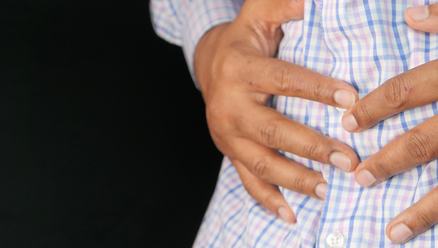


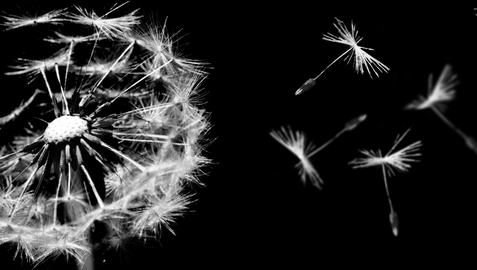


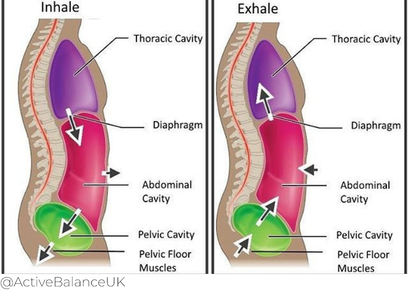


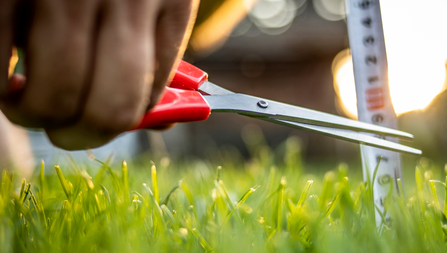
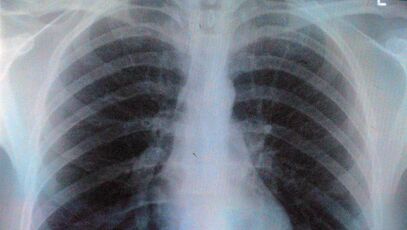
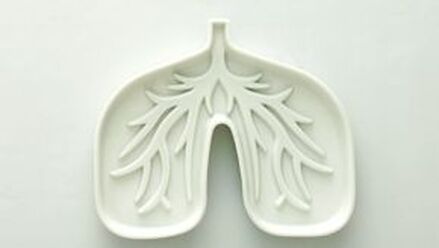

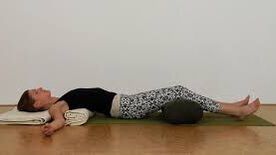
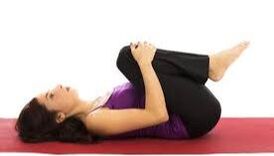
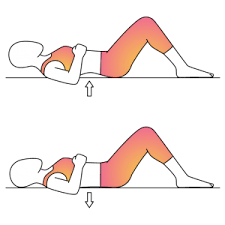
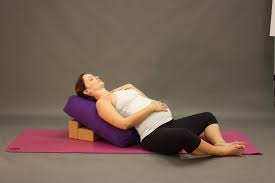
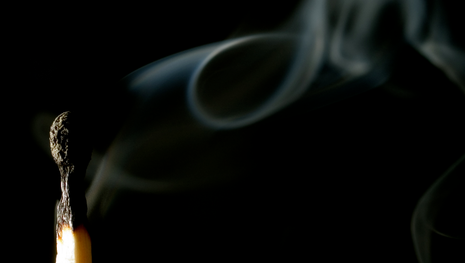
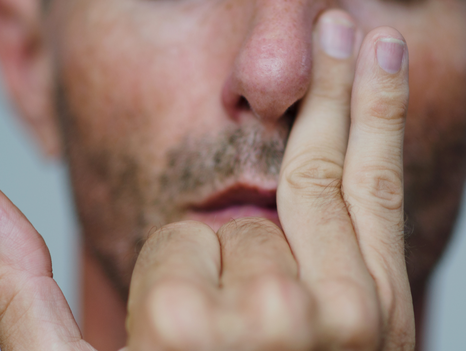
 RSS Feed
RSS Feed